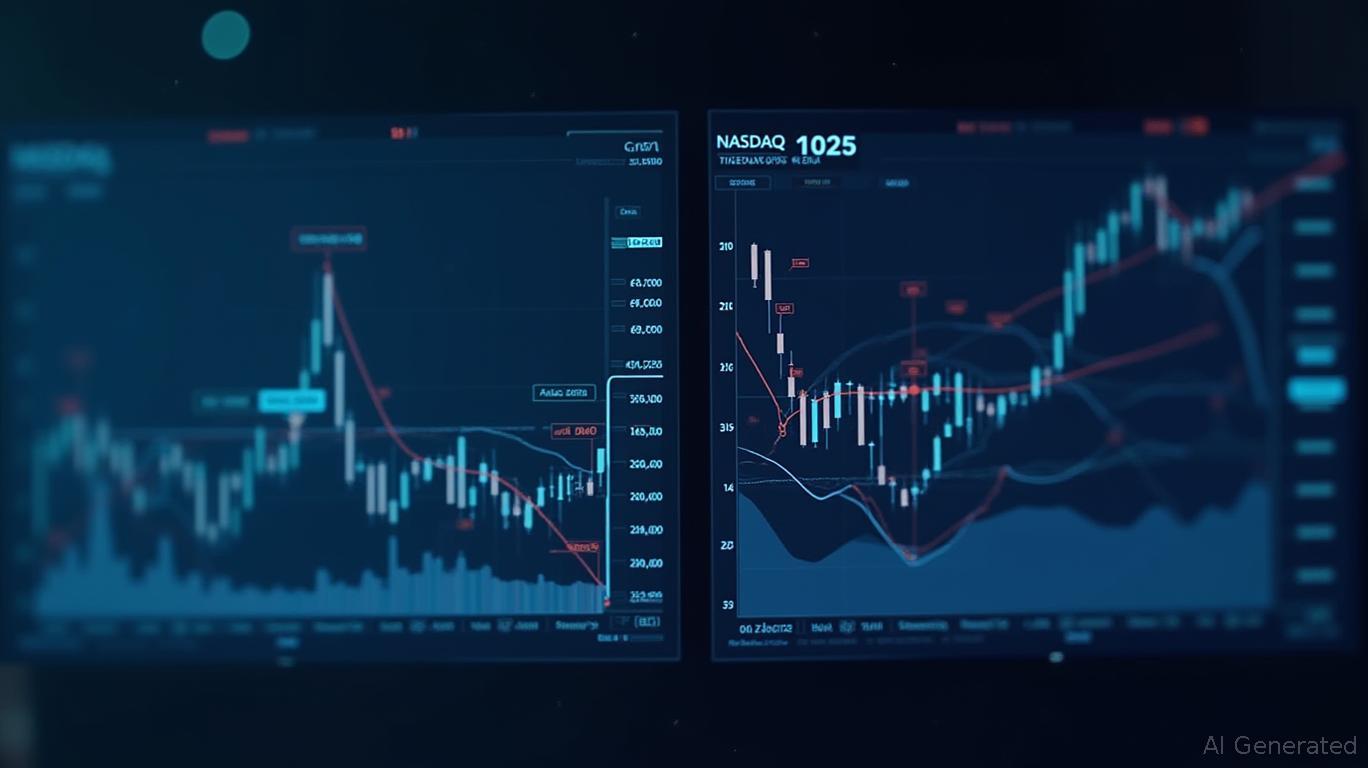Energy and Tech Futures: Navigating Volatility and Mispricings in a Shifting Market
The global economy is caught in a
shift. Crude oil prices, buffeted by geopolitical storms and OPEC+ policy swings, have become a barometer of instability. Meanwhile, tech stocks, fueled by AI euphoria and earnings volatility, have created a parallel universe of valuation extremes. These dual forces have generated significant mispricings in futures markets, offering sharp-eyed investors a chance to capitalize on divergent trends.
The Oil Shock Cycle: Supply, Speculation, and Mispricing
The crude oil market has been a seesaw of supply-side disruptions and speculative sentiment. Since early 2024, OPEC+'s abrupt shift to production hikes—adding 411,000 barrels per day in May 2025—has clashed with lingering geopolitical risks like the Israel-Iran conflict. This duality has created a “fear premium” in futures markets, pushing Brent crude prices above $85 even as inventories swell and demand weakens.
The disconnect is stark. While physical markets show a surplus—OECD inventories rose 25 million barrels in Q1 2025—futures contracts continue to price in geopolitical tail risks. This mispricing creates an opportunity: short crude oil futures until supply realities outweigh headlines. The structural shift toward non-OPEC+ production (Brazil, Guyana, U.S. offshore) further supports the bearish case, with global oversupply expected by 2026.
Tech's Volatility: AI Hype vs. Earnings Reality
The tech sector, meanwhile, is grappling with its own volatility. AI-driven stocks like NVIDIA and AMD have surged on hype, even as broader tech earnings disappointed. The S&P 500 Technology Sector Index rose 22% in 2024, yet Q2 2025 earnings showed a 3% decline in non-GAAP profits, with firms like Microsoft and Amazon warning of cost pressures.
The correlation between tech equity volatility and energy prices has deepened. Historically, rising oil prices hurt equities by raising input costs, but today's dynamic is inverted: tech's AI rally has decoupled from energy costs, while oil's fear premium persists despite weak demand. This divergence suggests a long Nasdaq futures / short crude oil pair trade could exploit mean reversion.
Structural Shifts and Mean-Reversion Signals
The energy transition and tech's AI revolution are reshaping fundamentals. The IEA's 2027 oil demand peak forecast and the rise of petrochemicals (now 16% of oil use) argue for a long-term bearish stance on crude. Conversely, tech's AI boom, while overvalued in the short term, could sustain momentum if earnings materialize.
However, near-term risks loom. A U.S.-China trade truce or a U.S. SPR replenishment could crush oil's fear premium. Similarly, a tech earnings miss (e.g., Amazon's cloud division) might trigger a Nasdaq correction. Investors should:
1. Short crude oil futures (Brent/WTI) with stop-losses above $90/bbl, targeting $70–$75/bbl.
2. Long Nasdaq futures if the index holds above 14,000, with a focus on AI leaders like NVIDIA, hedged against energy-sector declines.
3. Avoid equities tied to traditional energy (e.g., ExxonMobil) unless crude falls below $70/bbl.
Risks and Timing
The key risk is geopolitical escalation—Houthi attacks in the Red Sea or a full-blown Israel-Iran war—could spike oil prices temporarily. Investors must monitor U.S.-Iran nuclear talks (next round expected July 2025) and OPEC+ cohesion. For equities, tech's Q3 2025 earnings will test the AI narrative's durability.
Conclusion
The interplay of oil's supply shocks and tech's earnings volatility has created a fertile ground for futures arbitrage. By pairing long tech equity exposure with short crude oil positions, investors can profit from mean reversion in correlated markets. As the old adage goes: “Buy the rumor, sell the fact.” In this case, the “rumor” of oil scarcity and tech overvaluation may soon give way to the “fact” of oversupply and profit discipline.
The next six months will test these dynamics. For now, the mispricings are clear—the question is whether investors can act before the markets do.
This analysis is for informational purposes only and does not constitute financial advice. Futures trading involves significant risk.

Comments
No comments yet